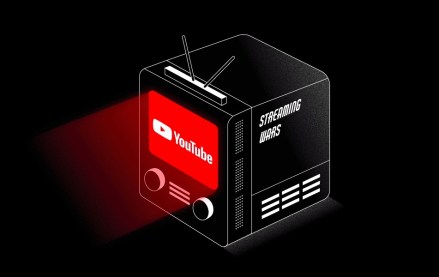
TV is one of the fastest-changing ad channels — which says a lot in the context of today’s ad landscape. The way viewers access content and entertainment through TV is shifting at a breakneck speed. And so, too, must the way advertisers reach those viewers.
Earlier this year, Nielsen reported that, for the first time, more people watch TV via streaming services than both broadcast and cable combined. According to “The Gauge” report, streaming accounted for 44.8% of TV viewership as of May 2025, while broadcast and cable together accounted for 44.2%. And as live sports increasingly become part of the streaming landscape, streaming viewership is not expected to slow down.
In fact, Simpli.fi recently reported that more than 71% of TV viewing specifically on ad-supported channels occurs on streaming TV. And while streaming, connected TV and OTT technically have their own definitions, the lines between them are blurring. The distinctions matter less than the experience itself: Viewers simply want seamless access to their chosen entertainment on any device.
Media buyers and advertisers must adapt their strategies to mirror this new world of TV viewership.
Those who approach their CTV tactics with a full-funnel strategy will get the most out of their investments. Because simply running a CTV ad is just the start — marketers have to continue the conversation with consumers to incite action.
What exactly does this look like? For the Saint Lucia Tourism Authority and its advertising agency Mediagistic, taking a CTV strategy full-funnel led to success with growing web traffic and driving consumer actions, including high video completion rates and low costs per action. By teaming with Simpli.fi, the Saint Lucia Tourism Authority achieved this over a three-month period — more on that below.
The bottom line is this: The way people watch TV has changed forever, from bingeing and streaming to scrolling and skipping. And advertisers’ campaigns have to keep up.
In this exclusive report, Digiday and Simpli.fi break down the blueprint for a full-funnel CTV strategy, from pinpointing high-value audiences to extending impact beyond the living room screen, to proving measurable results across every stage of the funnel.
Brands and agencies looking to take their CTV strategies full-funnel need to start with a strong foundation — they have to ensure that their message reaches the right audience.
Here are some tactics to consider:
- ZIP code targeted streaming TV: Allows advertisers to meet audiences where they live.
- Running ads only through quality streaming publishers: It’s the classic argument of quality vs. quantity — quality CTV inventory beats scale.
- Target desired audiences with intention: Advertising with precision is achieved through household-level targeting (for example, through Simpli.fi’s Addressable Geo-Fencing tool).
In the case of the Saint Lucia Tourism Authority, a combination of Simpli.fi’s Addressable Audience Curation, Addressable Geo-Fencing, Keyword Search Retargeting and Site Retargeting tools allowed the brand to build the right audience for its full-funnel CTV strategy.
The brand was able to target affluent travelers at a household level by identifying viewers with a household income of at least $200,000 who recently made a travel-related purchase and lived in New York, New Jersey, Connecticut or Boston. In addition, the brand was able to reach audiences based on their online behavior through 986 keywords that indicated interest in travel or beaches based on search activity. It also targeted users who had already expressed interest in Saint Lucia by visiting the Tourism Authority’s website.
After three months, the campaign drove more than 2,500 clicks and 1,300 actions on the Tourism Authority’s website. It also achieved video completion rates of 75.64% for online video and 98.02% for CTV. The campaign resulted in a low cost per action of $61.04.
In another example, a resort casino looking to grow brand awareness and increase its number of guests teamed up with advertising agency TRG to utilize Simpli.fi’s ZTV targeting solution to reach streaming TV viewers at a local level using targeted ZIP code lists. This enabled the casino to focus on the highest indexing streaming ZIP codes and reach target audiences with precision while maximizing ad spend. Simpli.fi served ads to potential visitors in ZIP codes that indicated high viewability for streaming content for those 21 years and older.
The resort casino’s three-month CTV campaign achieved an eCPM of $9.93 (exceeding the brand’s goal) and an overall video completion rate of 98.5%.
With the foundation of the right target audience set, brands and agencies have to build out their CTV strategies beyond the screen to include the full engagement funnel. In other words, running a CTV ad is only the beginning — the most successful CTV marketers continue the conversation with consumers to drive real action.
For instance, Simpli.fi recommends brands and agencies take the following steps beyond simply running a CTV-focused campaign to help marketers extend their impact and incite action:
- Re-engaging viewers with site and search retargeting
- Connecting beyond the TV screen to social media feeds through omnichannel solutions
- Driving real-world shopping visits with geo-fencing attribution (for brick-and-mortar retailers)
- Matching context with experience-friendly native placements
The takeaway for brands and agencies is to take an approach to CTV strategies that carries their marketing from the biggest screen in a home across every device consumers touch. This requires that advertisers unify their marketing across CTV, video, display and mobile channels.
Looking again at the Saint Lucia Tourism Authority example, a mix of 15-second and 30-second CTV and pre-roll ads empowered the brand to maximize touchpoints across household devices with large and small screens. Because Simpli.fi’s tools offer cross-device matching, the brand could track online conversions, regardless of the device on which ads were served.
Marketers can’t achieve a full-funnel CTV strategy without reaching the right audience across devices, but, at the end of the day, brands’ and agencies’ CTV efforts are only as strong as the metrics that quantify the success of those efforts.
In other words, if marketers can’t prove the impact, it can’t be amplified or improved upon. That’s why measurement makes or breaks a CTV strategy.
So, what does effective reporting look like when it comes to full-funnel CTV marketing?
From Simpli.fi’s perspective, impactful CTV reporting includes full-funnel visibility, omnichannel transparency, expert support and conversion journey tracking. At a base level, CTV strategies should measure impressions, unique individuals reached and conversions by type.
To take reporting a step further, though, Simpli.fi adds several more metrics to that list:
- Time of day conversion
- Completion of video/CTV spot views by audiences
- Geolocation data showing where users are converting most
- Domain reporting, device type, specific operating systems and unique app data to identify where user actions take place and more
These additional data points facilitate truly transparent reporting that details where CTV ads specifically land and what makes a difference.
Other things brands and agencies should consider when evaluating the effectiveness of their CTV efforts include tracking foot traffic or online conversions, determining the true value of their ROI, the ability to customize reporting and the transparency of reporting.
Closing their full-funnel CTV strategies with such definitive metrics not only makes the value of current CTV efforts clear, but it also sets brands up for future success in CTV advertising and CTV partnerships.
CTV is now central to audience engagement, but success requires more than just placing ads that run on a TV screen. Marketers’ full-funnel CTV strategies should start with precise targeting, extend across devices and screens, and end with transparent measurement.
For any brand or agency, the lesson is clear: Taking a full-funnel approach to CTV marketing gives ads life far beyond the TV screen, which drives measurable results and maximizes streaming’s expanding reach.
Partner insights from Simpli.fi


